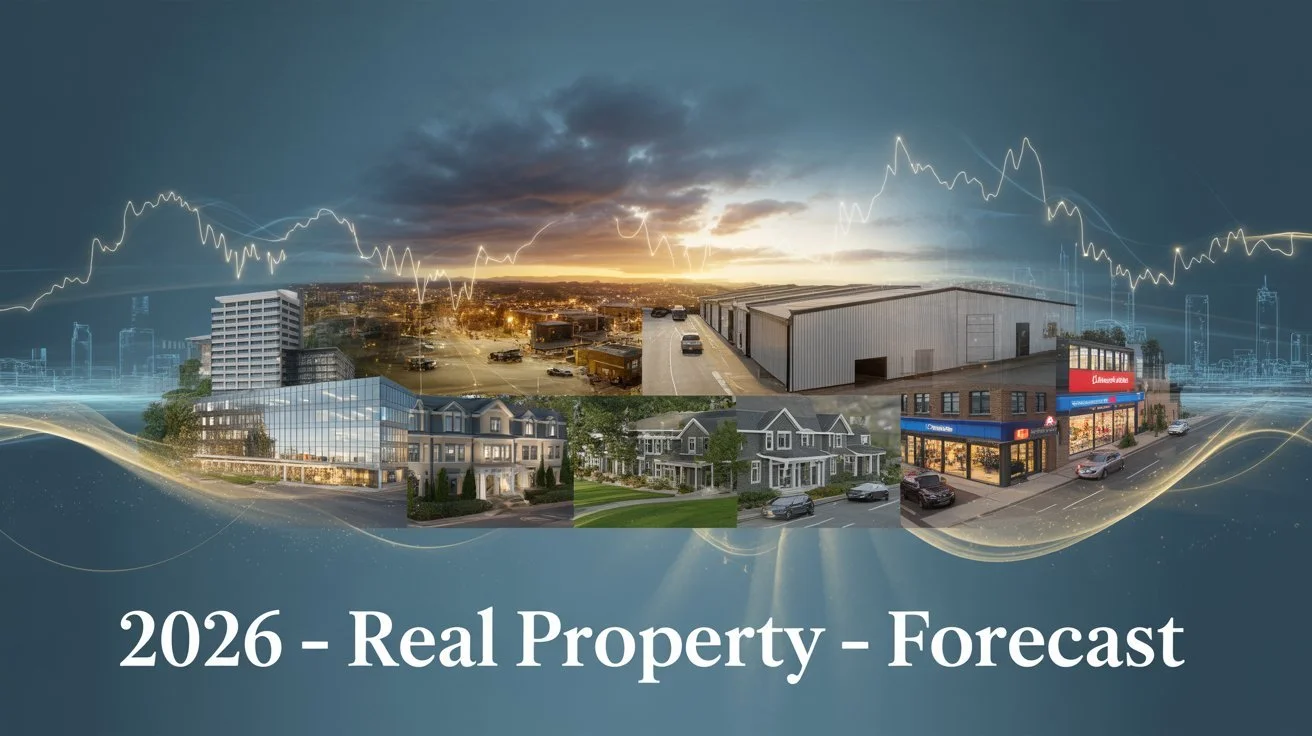2026 Real Property - Forecast
Every day a new reality!
Exploring the direction for real property in 2026 requires a nuanced examination of conflicting trends.
As with political rhetoric screaming from every direction, be prepared for the same in real property.
Pundits will say, “best time ever to invest” and “the end of the real property world as we know it”!
HOUSING
New apartments - Supply of housing has not caught up with demand, yet top end apartment rents will face slower than projected rental increases as employers of tenants “right sized” – particularly at high salary positions – to weather the uncertainty of a transition year in the economy. How will slowing population growth, and reduction of immigrant demand for housing, impact housing five years out?
Smaller apartments (50 – 150 units) – Expect transition in ownership, as acquisition loans come due, but at lower interest rates than would have been available today. To produce higher yields, look for non-traded funds to promote aggregation of smaller apartments in secondary markets.
Debt - Properties owned with fixed rate debt, with years left on the loans, will stand steady and not refinance (until we have clarity on the long-term direction of the economy).
Single Family - Sustained mass exuberance, and cheap debt, was the driver for exceptionally strong demand for single family housing. Expectations of ever-increasing incomes has rightfully softened, and interest rates are not going to significantly drop next year.
CONSIDERATIONS
Retail - Nothing suggests an increased demand for retail space, but those properties which have survived through Covid, inflation, and high interest rates will somehow survive the modest turmoil of 2026.
Office - Covid and Zoom showed that many businesses can be effective with much of their workforce working from home. Rapid implementation of “Artificial intelligence” reduces the need for white- and pink-collar workers. Overall demand for office space continues to drop …but it not “the end of the world as we once knew it”.
Self Storage. No matter the economy, American continue to collect stuff, which they do not dispose of following divorce, unemployment, or relocation.
Industrial. High bay industrial (for “just-in-time” distribution) will continue strong. Demand is growing, and supply continues to be inadequate in most markets (though not all)
BOTTOM LINE.
National trends will impact the perceived value of certain asset types, but the market value will depend on local conditions.
We will experience a quiet shift in real property use and valuations.
Look for movement toward the end of 2026, as perceptions would change post the national house election IF there were a shift in control of the House.
Until then, investors do not appear to be sitting on the sidelines.
The word from institutional funds suggests a continued slowing of investment velocity.
One foot in the water; one foot poised to exit quickly!

